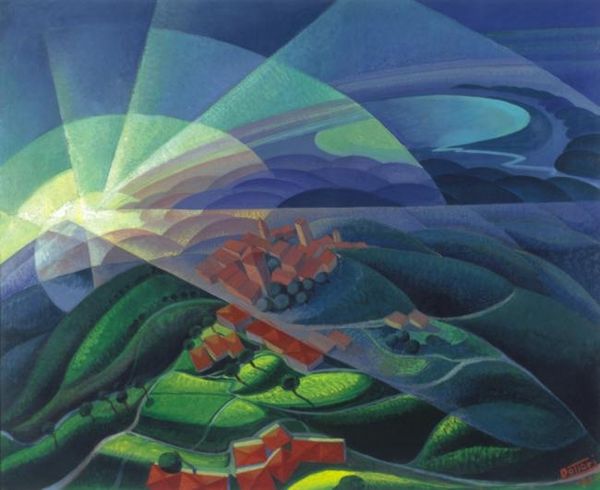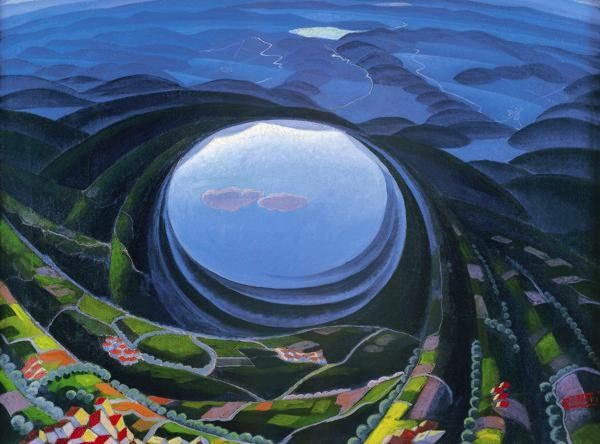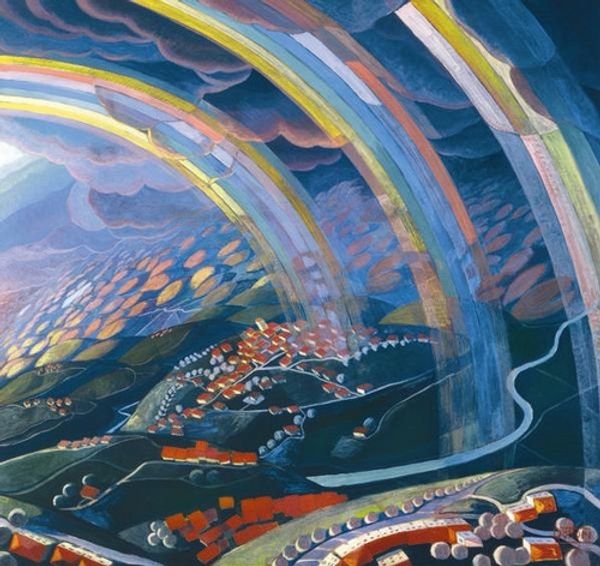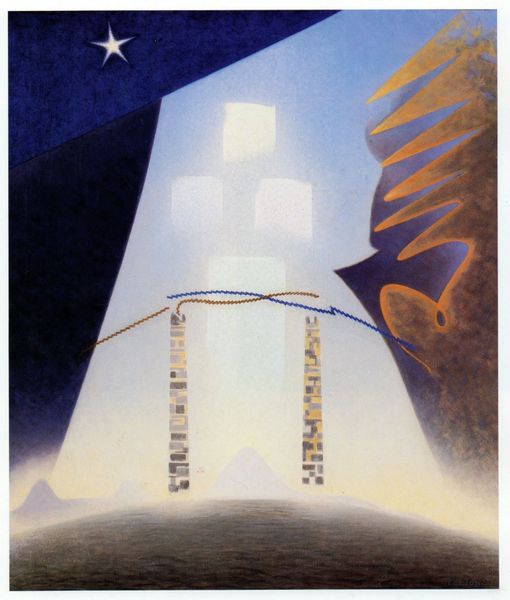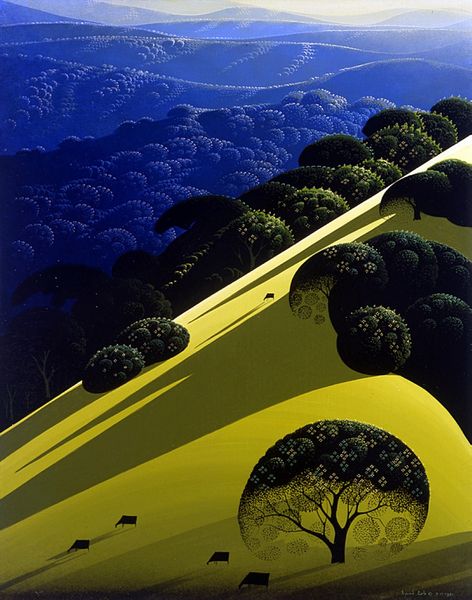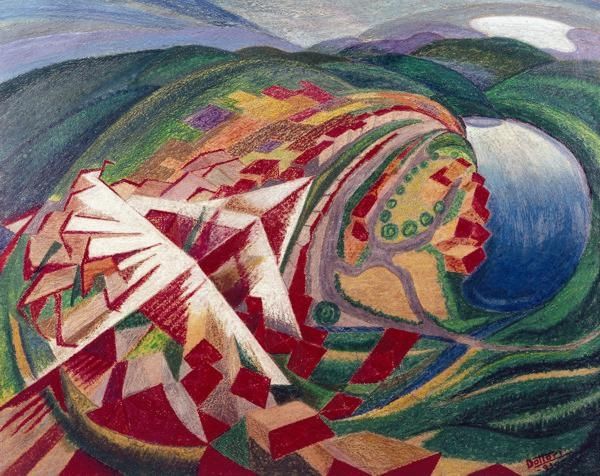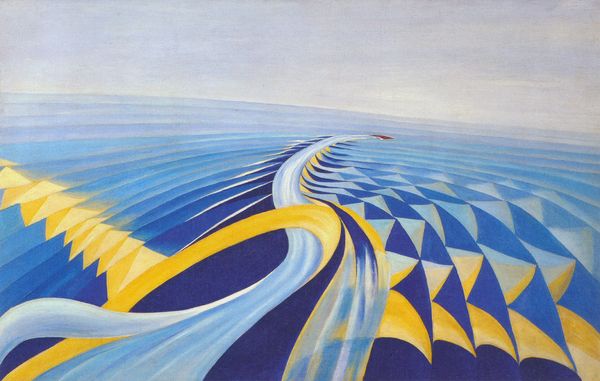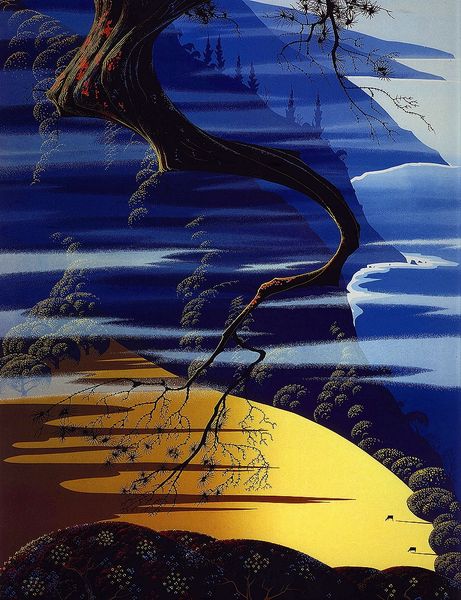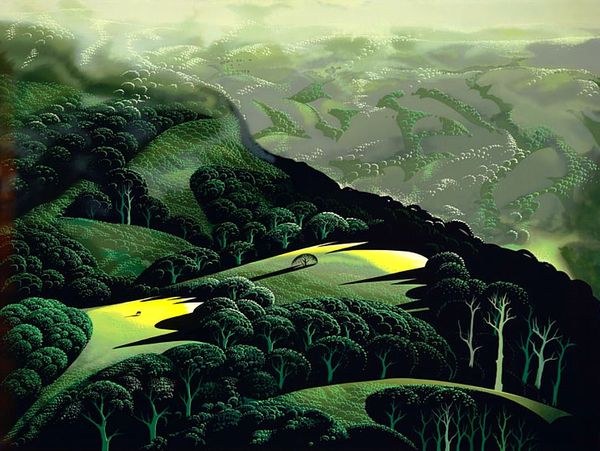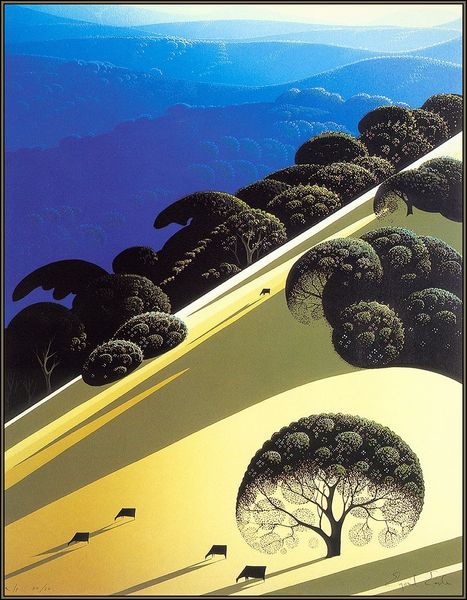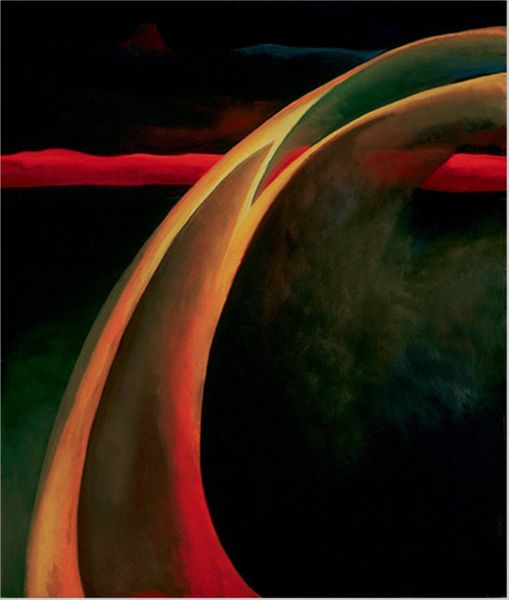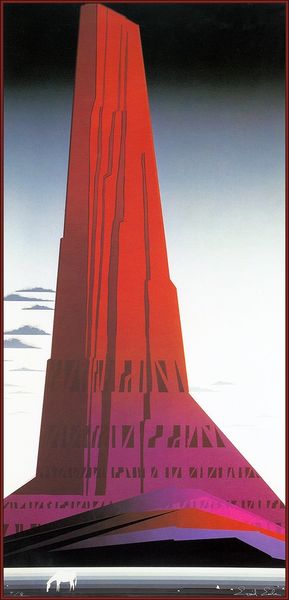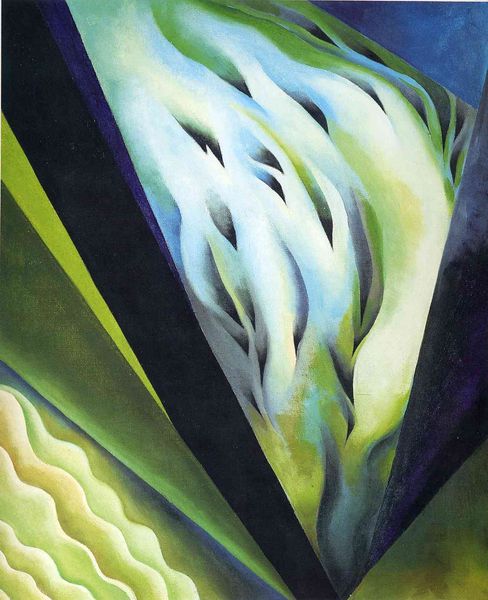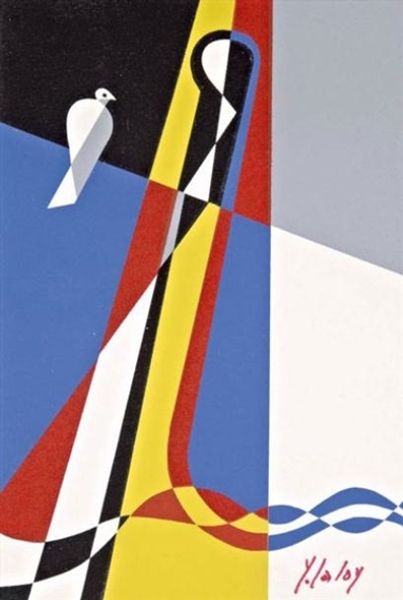
Copyright: Gerardo Dottori,Fair Use
Curator: Welcome. We're standing before Gerardo Dottori's 1927 oil on canvas titled "il Trittico della Velocità: Il Corsa" or "The Triptych of Speed: The Race." Editor: It's a visual explosion! All these lines converging create a powerful sense of motion. I’m immediately struck by the energy, but also an interesting coolness with the blue-green palette dominating. Curator: Dottori was a key figure in Italian Futurism, a movement that celebrated technology, speed, and modernity. The Futurists sought to capture the dynamism of modern life in their art, literature, and manifestos. Editor: The obsession with speed is obvious. It's impossible not to see it through a modern lens – the almost violent acceleration, the environmental impact of technology. There’s a glorification here, but can we see a critique, too, a questioning of progress? Curator: I think at the time, critique wasn't the intention. The Futurists largely embraced technological advancement without reservation. They associated speed with progress, even societal cleansing. "Il Corsa" isn’t merely depicting movement; it’s an ode to the machine age and its transformative potential. This painting, and Futurism in general, can be tied directly to fascist ideology with its focus on speed, purity, and strength. Editor: That context is chilling. Looking at those layered curves now, the geometric forms—are we really seeing this dynamism or rather, a rigid, perhaps even dangerous, ideology being imposed? The landscape almost feels flattened, devoid of humanity except for the potential of an oncoming force represented in the work's center. Curator: The absence of human figures is significant. It’s about the collective, the forward momentum of society, rather than the individual. And Futurism found enthusiastic support within the fascist regime in Italy. Marinetti, the movement's founder, was a prominent fascist, so while individual artists within the movement had varying degrees of commitment, the link is undeniable. Editor: So how do we grapple with such beauty alongside this unsettling history? Can we even separate them? Perhaps acknowledging the work’s beauty and critiquing its underlying ideology is crucial for engagement with it today. Curator: Precisely. Art exists in a complex web of social and historical forces. It reflects and shapes those forces. Dottori's painting, with its captivating composition and unsettling context, is a powerful reminder of that. Editor: I’m left feeling disturbed, but also stimulated by the conversation the artwork has now opened. Curator: A powerful, and I believe necessary, duality of art engagement.
Comments
No comments
Be the first to comment and join the conversation on the ultimate creative platform.
